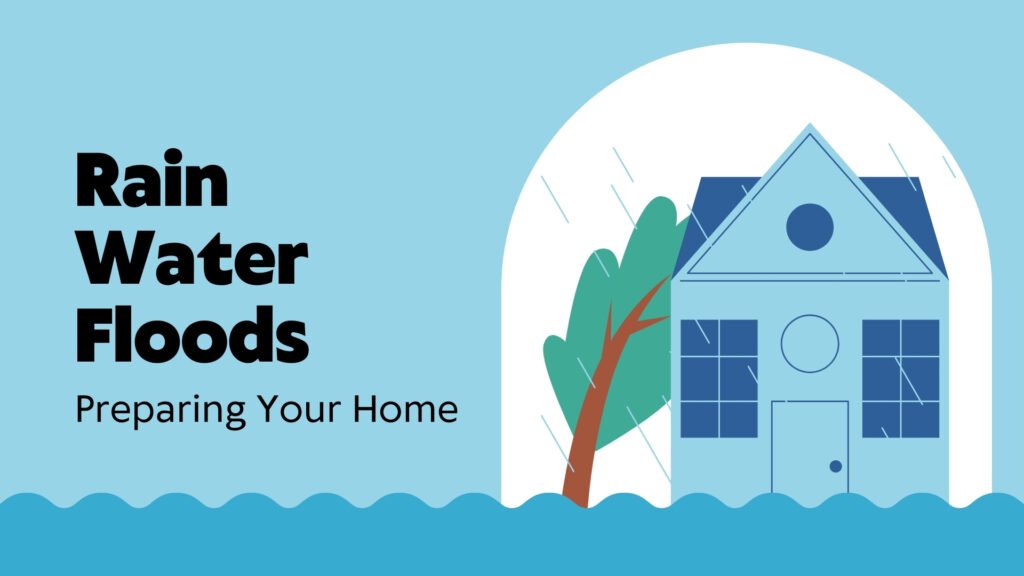RAIN WATER FLOODS

There are many places that water can come from to flood your home. As such, there are many different steps that a homeowner can take to protect their home from flooding. In this blog, we will explain where storm flood water comes from and what steps you can take to protect your property.
The first distinction to make is between sanitary sewage floods, water line floods, and storm water flooding. For our discussion regarding sanitary sewage flooding, click here.
There are various natural and man-made infrastructures that are designed to carry rain water. In Toronto, nature provides ravines with creeks and streams. These in turn feed the three main rivers in the city, the Humber River, the Don River and the Rouge River that transport the water and empty into Lake Ontario. The ground also absorbs the water. This water eventually seeps down into the underground aquifers. Lastly, we have man made infrastructure like downspouts, storm sewers, weeping tiles, sump pits, sump pumps, waterproofing membranes and backwater valves that are each designed to supplement the natural infrastructure and ensure rain water doesn’t penetrate your home.
What is the water table? And why do I care?
Colloquially, water table refers to an unconfined aquifer located near the surface of the earth. You can think of aquifers as underground lakes. When people refer to a high water table or a low water table, they are referring to how much water the ground is capable of absorbing before it overflows and becomes swamplike. A high water table means that the ground is fairly saturated with water right up to the surface and cannot absorb much more water. A low water table means the ground near the surface is dry and has plenty of capacity to absorb more water.
Typically, the water table is higher during the spring from all the snow melting and drops throughout the summer with the dryer weather. When we experience lots of rainfall over a prolonged period, the water table rises. Basically, the height of the water table is an indicator of the risk of flooding.
The more direct concern from the water table is that it can flood your house from below. The water table is not flat. It has peaks and valleys throughout the Greater Toronto Area that is dictated by the terrain and density of the ground. If your home is near a peak in the water table, and the water table is high, the water can come up from below your house and in through your basement floor. This is one of the numerous issues that can be mitigated with the installation of a sump pit and sump pump.
What actions can I take to protect my property from flooding?
There are many things you can do to minimize your risk of flooding. With enough pressure or enough time, water will seep through anything. Generally, we take a two pronged approach. Firstly we route the water away from your home to more desirable areas and secondly we block the water from entering your home. Doing one without the other (i.e. sealing your foundation but not giving the water anywhere to go) has limited effectiveness. Below we will outline how the various waterproofing methods work.
- Downspouts – Making sure your eavestroughs and downspouts are clear allow water to flow smoothly from your roof and onto the ground. You also need to confirm that your downspouts extend away from your home onto ground that is sloped away from the foundation. This ensures that the water flows away from your home.
- Landscaping – Ensuring the ground around your house is graded away from your home helps water flow away from your house. There are also various species of plants that can help with soil erosion and absorbing the water.
- Sealing your foundation – This is fairly simple in the way it works. By closing all cracks in the foundation walls, it removes the source of foundational leaks. There are different types of membranes that you can attach to the interior or exterior of the foundation wall to reinforce the water tightness of the foundation. The most common reinforcements are tar and dimple board. For both of them, they cause the water to keep running past the foundation and not to pool against the foundational wall.
- Weeping tile – This is a porous pipe underground that surrounds your foundation. It takes any water that collects near the foundation and routes it away from the foundation. It can either send the water into some kind of French drain (underground manmade reservoir); into the main drain of your home; or a sump pit.
- Sump pit and sump pump – A sump pit is a hole at the lowest point in the basement. A sump pump is placed inside this pit and automatically removes any water the collects in the pit to a designated area outside your home Typically, your weeping tile empties into this pit. It also acts as a barrier between your basement floor and the water table. By creating a pit below your basement, it is the first area to be flooded by a rising water table.
- Backwater valve – During large storm events, the city drains can become overwhelmed by the influx of water. When this occurs, the city backs up into the basements of the nearest homes. A backwater valve is a one way valve that is placed in the main drain at the exit of the house. It prevents the overflow from the city from entering your home.
What happens if there is a power outage during a storm?
The good news is that most of the protective devices and strategies we have discussed do not require any electricity to function. They will continue to protect you with or without power. The only one that runs on electricity is the sump pump. This means that when there is a power outage, your sump pump will cease to function. This will cause your basement to flood often within minutes of the power going down. There are several options that are available to mitigate this risk.
- Generator backup – A standby generator with an automatic transfer switch is the Rolls Royce of options for electrical backup. This system will automatically detect a power outage and trigger a generator to provide backup power to your home.
- Battery backup pump – This is a secondary sump pump that provides an extra layer of protection to your home. When your primary pump loses power, the battery powered backup pump kicks in. Additioanlly, if your primary pump is unable to keep up with the all the water coming into your sump pit during extreme flood conditions, the backup pump will help. Lastly, if your primary pump fails, the backup pump will ensure that your home doesn’t flood. The down side to this type of backup is that it is limited by the strength of the battery. While you get anywhere from several hours to several days of backup from the battery depending on conditions, this can pose an issue during a prolonged power outage.
- Water powered backup pump – This clever system ties into your municipal water line and uses Bernoulli’s Principle to create a vacuum that suctions the water out of your sump pit. As long as you are on municipal water, this system will provide unlimited backup to your primary pump.The down side is that it is expensive to run; it wastes lots of potable water; and it requires a second ejection line to operate.
- Sump pit monitoring – This is something that alerts you when the sump pit gets too full. This can range from an audible alarm that sounds when the water reaches a certain level to a push notification sent to your phone letting you know that you are about to flood. This allows you to proactively address the issue before your basement floods.

